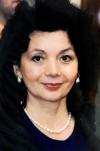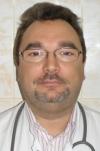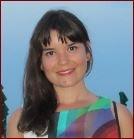Address: Spital Clinic Municipal de Urgenţă Timişoara, Clinica de Cardiologie, Bdul. Revoluţiei, Nr. 12, Timișoara, cod 300024
Phone: 0256/498345
E-mail: semiologiemedicala@gmail.com
Head of the University Clinic
Members:
The discipline of Medical Semiotics II, established in 1989, started with a team initially composed of only 3 teachers: Prof. Dr. Radu Cristodorescu, Dr. Rodica Avram and Dr. Mirela Tomescu. The first head of the discipline was Prof. Dr. Cristodorescu Radu, who led the clinic from 1989 until his retirement in 2000. Between 1990 and 1992 he was vice-dean of the Faculty of General Medicine. Between 2000-2004, the discipline of Medical Semiotics II was led by Prof. Dr. Branea Ioan, member of the Academy of Medical Sciences. Under his leadership, Medical Clinic II was transformed into the Cardiology Clinic of the Municipal Hospital and the coronary intensive care unit was established.
Since 2004, the head of the clinic and discipline is Prof. Dr. Mirela Cleopatra Tomescu, who has brought a new breath, aiming to increase the prestige of the discipline inside and outside the university through a sustained didactic and scientific activity.The content of the medical semiotics course was fundamentally revised, with an emphasis on the audiovisual means of teaching and the formation of logical medical thinking, based on both a complete clinical examination and modern methods of paraclinical investigations.
The integrated curriculum of the discipline combines traditional learning methods with aspects related to a problem-oriented approach, pursuing three types of learning and training: knowledge and understanding, skills and competences and behavior and professional attitude.
Students’ skills develop progressively throughout the course and internships in medical semiotics, at the patient’s bedside and in the skills laboratory equipped with a fully equipped mannequin, thus facilitating the acquisition of the knowledge base necessary for medical practice. The third component is the key element of future professional development and students are expected to demonstrate these behavioral and attitude attributes as a professional physician at an early stage of the course. Integrated in the teaching-learning activity, the evaluation occupies an important position in the didactic configuration of the medical semiotics course. In order for students to become familiar with the methodology of the bachelor’s exam and the residency competition, both the periodic verification of the preparation and the written test of the exam sessions are carried out with the help of anonymous theses, with multiple choice test questions.
The discipline’s staff currently consists of 11 members. The didactic activity is carried out with students of the following specializations of the Faculty of Medicine: 3rd year General Medicine (Romanian and French), second year Nursing and first year Balneo-physiotherapy and Recuperation. The post-university teaching activity includes the training, within the cardiology internships, of the internal medicine and cardiology residents.
The scientific research is carried out within the Multidisciplinary Heart Research Center and is aimed at addressing cardiovascular health through multidisciplinary research. The expertise of the team has materialized in numerous bachelor’s theses and doctoral theses. The valorization of the research was achieved by presenting papers at national and international symposia, conferences and congresses, as well as by publishing numerous articles in specialized journals. The international recognition of the team is demonstrated by the acceptance of its members in numerous randomized, multicenter clinical trials. The experience in the diagnosis and treatment of cardiovascular diseases was concretized by writing monographs and treatises.









